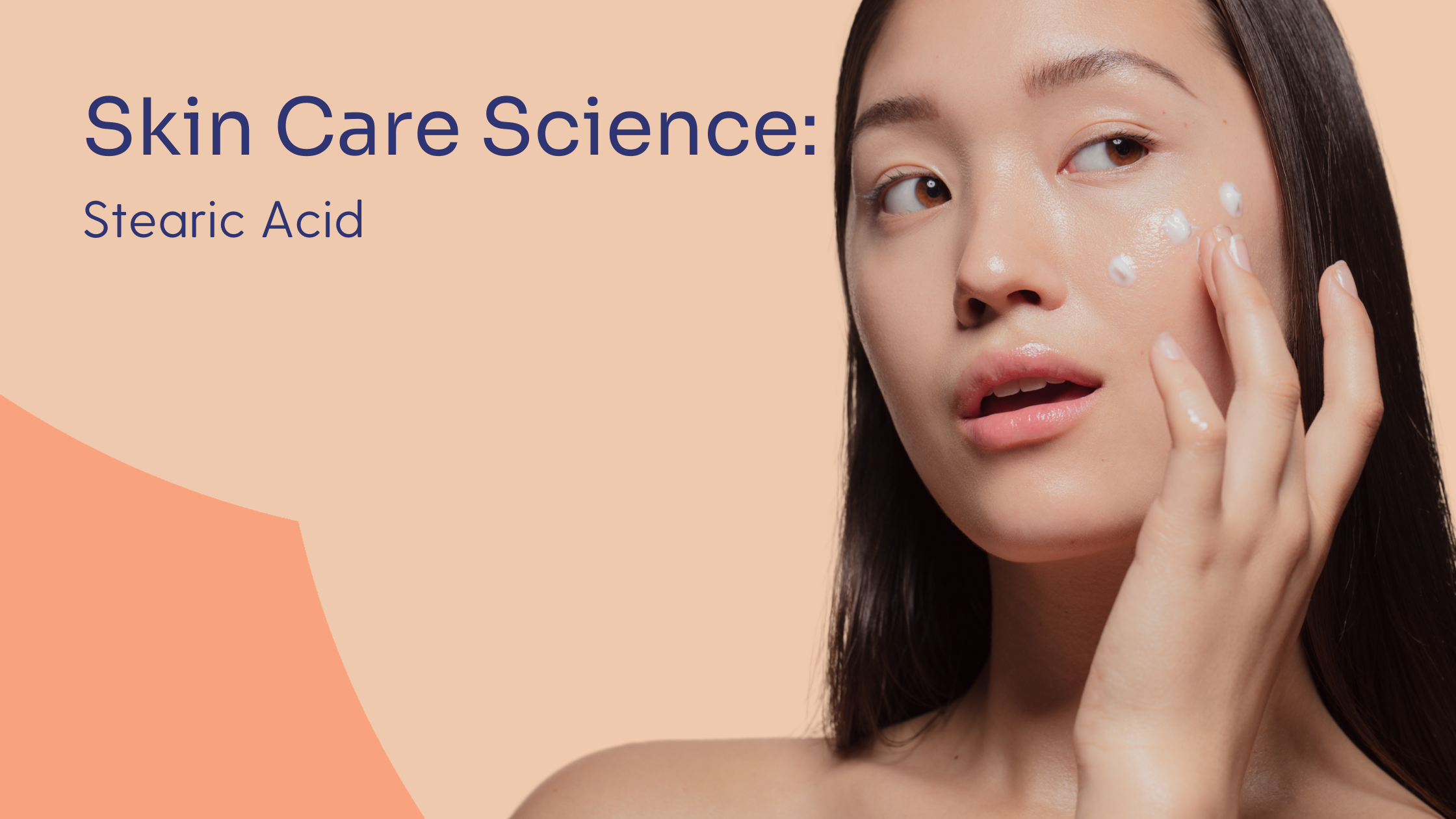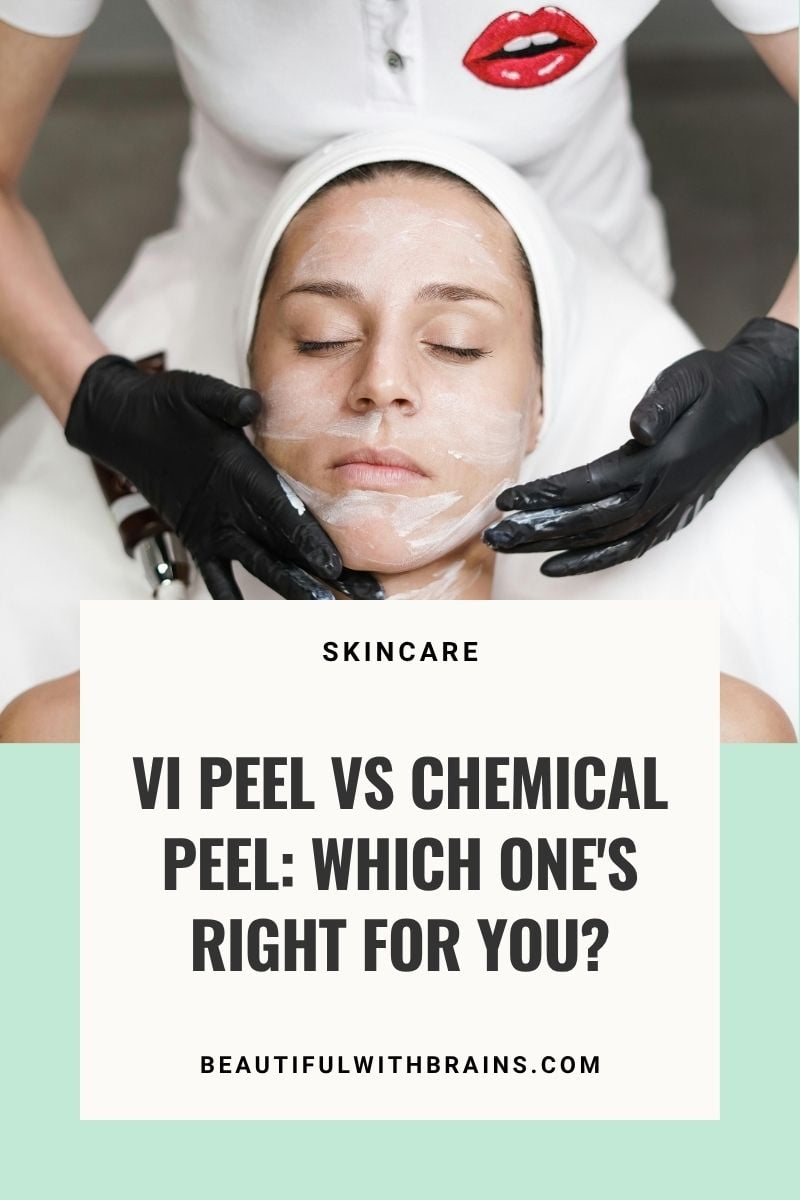🔄
Stearic acid is a type of fatty acid that is found in a wide range of skin care products, particularly moisturizers and cleansers. If you are interested in knowing more about what each ingredient in your skin care products is and does, understanding stearic acid is a great place to start because it is one of the best fatty acids in moisturizers.
While often overshadowed by more front-and-center ingredients like hyaluronic acid or retinol, stearic acid plays a critical role in the texture, stability, and overall performance of many formulations. In this article, we’ll break down the science behind stearic acid, its functions in skin care, potential benefits and drawbacks, and how to know if it’s right for your skin type.
One of the best fatty acids to repair the skin barrier.
A fatty acid that both repels and attracts water.
Acts as an emulsifier, surfactant, and thickening agent in skin care.
Found in many moisturizers, cleansers, sunscreens, and eye creams.

What Is Stearic Acid?
Chemically known as octadecanoic acid, stearic acid is a long‑chain saturated fatty acid with the formula CH₃(CH₂)₁₆COOH and 18 carbon atoms in its chain. It is naturally derived from animal fats like tallow and plant oils such as shea, cocoa, and mango butter and can also be synthetically produced. In pure form, stearic acid is a white, odorless, and waxy solid at room temperature.
From a chemical standpoint, stearic is classified as a carboxylic acid with both a long hydrocarbon tail (which is hydrophobic, or water-repelling) and a polar carboxyl group (which is hydrophilic, or water-attracting). This structure gives stearic acid unique properties that are especially useful in cosmetic and personal care formulations.
Because of its amphiphilic structure (meaning it has both water-repelling and water-attracting properties), stearic acid is commonly used as an emulsifying agent, helping water and oil-based ingredients blend together to form a stable, uniform product. It also acts as a thickener and stabilizer, giving creams and lotions a smooth, spreadable texture.
Stearic acid itself does not act as an active ingredient in skin care formulations. Instead, it functions more like a structural support ingredient, playing a key role in how a product feels, how long it lasts, and how well it delivers other active ingredients to the skin.

Chemical Structure and Functions
The unique chemical structure of stearic acid allows the individual fatty acids to squeeze closer together resulting in less space between the fatty acids. This makes the skin barrier much stronger.
The structure of stearic acid outlined above gives it both water-repelling and water-attracting properties at the same time.
This streamlined linear structure allows stearic acid to perform a number of key functions within skin care formulations:
- Structural component of skin barrier that allows maximum barrier strength.
- Emulsifier that helps water and oil ingredients mix uniformly in skin care formulations.
- Surfactant that reduces surface tension to improve the cleansing or moisturizing capabilities of skin care products.
- Thickening agent to enhance the overall smoothness and texture of skin care products.
- Occlusive that helps the skin to retain moisture.

Skin Benefits
Stearic acid is an active ingredient with a number of important benefits for the skin.
-
Emollience and softness. Stearic acid helps to soften skin by creating a thin, occlusive barrier that prevents moisture loss.
-
Barrier function support. Combined with other lipids, stearic acid can help to strengthen the skin’s natural barrier function, which is responsible for sealing moisture inside and keeping allergens and irritants out.
-
Improves cleansing properties. By reducing the surface tension of a cleanser, stearic acid helps water to remove oil and debris from your skin more effectively.
-
Texture and spreadability. Stearic acid thickens and stabilizes creams and lotions, allowing them to spread more smoothly and consistently.

Side Effects & Safety
According to both the Environmental Working Group and Cosmetic Ingredient Review Board (CIR) , stearic acid is considered safe and a low risk of health concerns or allergies.
Although high concentrations of pure stearic acid can cause skin or eye irritation, skin care formulations use lower concentrations of this ingredient, and typically derives it from plant sources like coconut oil, shea butter, or vegetable oils. When used in the proper concentrations, stearic acid very rarely causes skin irritation.
It is important to note, however, that some people may have allergies or sensitivities to ingredients like coconut oil , which contains stearic acid.
Skin Care Products with Stearic Acid
Many skin care products contain stearic acid, particularly those with moisturizing or cleansing properties. Some of our favorite products with stearic acid for dry skin include:
Bottom Line
Stearic acid is a stable, well-researched fatty acid used extensively in skin care for its emulsifying, thickening, occlusive, and surfactant properties. It supports texture, hydration, and product stability, and is considered safe when formulated correctly. Though not an active treatment ingredient, it indirectly benefits skin health by enhancing product performance and skin feel.
To find the best moisturizers, cleansers, sunscreens, and other products for your skin, narrow your search based on your skin type.
Is stearic acid a pore-clogging ingredient?
Stearic acid is not considered a comedogenic, or pore-clogging, ingredient on its own. However, some ingredients that contain stearic acid, like coconut oil, can clog pores.
Is stearic acid good for your skin?
While not an active ingredient with traditional skin benefits, stearic acid can help to soften and smooth skin and support the skin barrier while also creating a smooth, pleasant texture. I
Is stearic acid vegan?
Stearic acid can be derived from both plant and animal sources. In skin care, it is often derived from plant sources such as shea, cocoa, coconut, and mango oils and butters. Contact the manufacturer directly to find out more about whether or not a particular product is 100% vegan.
Best References and Scientific Publications on Stearic Acid
- Baumann L. Moisturizers in Ch. 43 of Baumann’s Cosmetic Dermatology Ed 3. (McGraw Hill 2022)
- Baumann, L. Ch.23 Stearic Acid in Cosmeceuticals and Cosmetic Ingredients (McGraw Hill 2015)
- Pereira-Leite, C., Bom, M., Ribeiro, A., Almeida, C., & Rosado, C. (2023). Exploring stearic-acid-based nanoparticles for skin applications—Focusing on stability and cosmetic benefits. Cosmetics, 10(4), 99.
- Acid, L. (1987). Final report on the safety assessment of oleic acid, laurie acid, palmitic acid, myristic acid, and stearic acid. J. Am. Coll. Toxicol, 6(3), 321-401.
- Mukherjee, S., Edmunds, M., Lei, X., Ottaviani, M. F., Ananthapadmanabhan, K. P., & Turro, N. J. (2010). Original Contribution: Stearic acid delivery to corneum from a mild and moisturizing cleanser. Journal of cosmetic dermatology, 9(3), 202-210.
- Schueller, R. (2020). Stearic Acid. The Gale Encyclopedia of Science, 7, 4231-4232.
- Ananthapadmanabhan, K. P., Mukherjee, S., & Chandar, P. (2013). Stratum corneum fatty acids: their critical role in preserving barrier integrity during cleansing. International journal of cosmetic science, 35(4), 337-345.
- Mohiuddin, A. K. (2019). „Skin care creams: formulation and use.”. Dermatol Clin Res, 5(1), 238-271.
Share
Comments










